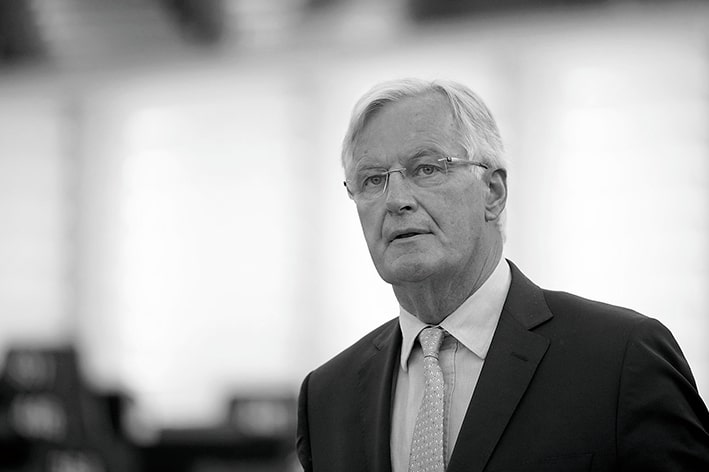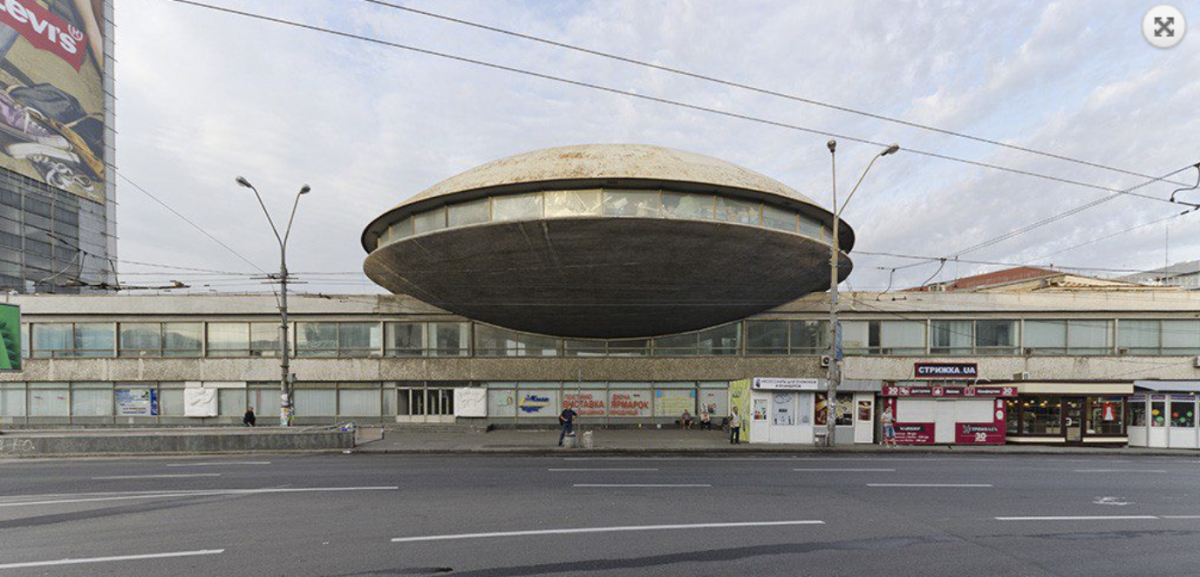Russian combatants in northern Mali faced a bloody confrontation earlier this summer. On 27 July, a Malian army patrol accompanied by Wagner Group auxiliaries was ambushed by Tuareg rebels near Tinzaouaten on the Algerian border. The Malian military acknowledged significant losses without providing specifics. Videos circulating on social media show destroyed vehicles and dozens of bodies strewn across the desert. Russian media reported around twenty Wagner deaths, while rebel sources claimed up to eighty mercenaries were killed. A sandstorm is said to have stalled the column, leaving it vulnerable to the attack. The spokesman for the rebel coalition accused government forces of retaliatory drone strikes, causing around ten civilian deaths in the area.
Following the attack, Ukraine’s director of military intelligence claimed that his agents had fought alongside the Tuareg rebels. This was corroborated by images showing black and white fighters holding the flags of Azawad and Ukraine side by side. It would not be the first instance of Ukrainian engagement in Africa. In November 2023, reports emerged of a hundred Ukrainian special forces taking part in operations against Wagner-backed militias in Sudan. In Mali, Ukrainian agents are said to be training Tuareg rebels to use the Mavic 3 Pro, dubbed the ‘AK-47 of the 21st century’ – a lightweight drone used for close reconnaissance and equipped with a drop grenade.
The ambush marks the first major defeat in Africa for the Wagner Group, which was formally placed under the control of the Russian Ministry of Defence after the failed coup of June 2023. First deployed in Crimea in 2014, the private military company has been active in Africa since 2017, with operatives reported in some eight countries, from Libya to Mozambique. Wagner functions as a series of semi-independent franchises, which employ Russian cadres alongside local fighters and veterans from neighbouring conflicts (primarily Libyans and Syrians). Of the 5,000 men it has in Africa, 1,500 are in Mali. This is half the number of soldiers who were stationed there as part of Operation Barkhane – France’s counterinsurgency mission in the Sahel – whose responsibilities Wagner has gradually assumed since Colonel Assimi Goïta took power in May 2021.
The government in Bamako is using Wagner to fight the separatists of the Coordination of Azawad Movements (CMA), an alliance of Tuareg militias active in the country’s north-west. The CMA is demanding the creation of an autonomous state, Azawad (‘Land of Transhumance’), an 800,000 km² expanse of rock and sand surrounding the cities of Timbuktu, Gao and Kidal. It commands a force of around 3,000 men, reportedly equipped with weapons and ammunition abandoned by Malian regular troops. Recent fighting appeared to favour the government forces. A Wagner-coordinated air campaign enabled them to recapture Kidal in November, more than ten years after a deal brokered by France and Algeria had handed it to the rebels. With the conclusion of Operation Barkhane, reclaiming the city became a priority for the junta as a symbol of restored Malian sovereignty.
Wagner purports to offer sub-Saharan states a comprehensive alternative to the French. Its mercenaries equip and train the armed forces and presidential guards, traditionally a key lever of power for Paris in ‘friendly’ regimes. But the group also provides non-military services, with a network of companies that compete with French economic interests: offering access to credit lines, management of mining and forestry activities, and even local vodka and beer production, to the detriment of French beverage company Castel. In classic neo-colonial fashion, Wagner offers its services in exchange for concessions. In Mali, it secured a revision of the mining code, granting more control to local political authorities at the expense of established foreign companies. Details of its fee structure remain opaque. Le Monde reported that €135 million of Mali’s 2022 defence budget was attributed to Wagner (well below the €600 million annual cost of Barkhane).
The Sahel – like the Horn, where the Gulf-led proxy war in Yemen is spilling over – is at the centre of what some are calling the ‘new scramble for Africa’. The recent wave of regime changes, some carried out by democratic means, others by force, has reshuffled the geopolitical deck. The withdrawal of French forces coincided with the rise of a new strategic bloc, formalised by the creation of the Alliance of Sahel States in September 2023. This confederation, comprising Mali, Niger and Burkina Faso, was intended as a counterweight to ECOWAS and the G5 Sahel, both seen as pawns of the French. The demand for reliable military cadres in a region where national armies often drive political instability has created a favourable environment for private operators. Wagner’s arrival has thus allowed Moscow to gain a foothold in a region it had largely abandoned since the end of the Cold War (it has recently rebranded its operations there under the name Africa Corps).
If the Saharan-Sahelian belt is hotly contested, it is not least because of its resources. Local populations are on the frontline of mining conflicts, particularly in Niger, one of the world’s leading uranium producers. France has exploited several mines there since the 1960s, under the quasi-monopoly of Cogema – later Areva, now Orano – a linchpin of the country’s energy sovereignty, established during the oil shocks of the 1970s and still 50% state-owned. In 2023, Niger supplied about 15% of France’s uranium. Pending the development of so-called ‘fast neutron’ reactors, which are less fuel-intensive, Niger’s imports remain critical. Securing uranium sites in the ‘three borders’ area was allegedly one of the motivations behind Barkhane’s predecessor, Operation Serval – following a series of kidnappings at Areva’s mining complex in Arlit.
French involvement with the Tuareg long predates the discovery of uranium. The French conquest of the Sahara, begun under the Second Empire, expanded under the Third Republic when, to ratify the territorial partition agreed at the Berlin Conference, the signatory states had to effectively occupy the territories they had claimed. This need for control combined with a fascination with the way of life of the desert peoples. The exotic and archaic allure of these nomads captivated French high society: could these fair-skinned, light-eyed peoples be the descendants of Frankish crusaders, wondered deluded newspapers of the time. This fantasy was further fuelled by the idea that the supposedly moderate Islam practised by the Tuareg might be a veneer concealing an ancient Christianity.
The colonial administration regarded the Tuareg (a term of Arabic origin not used by the people it describes) as a constellation of chiefdoms, which it divided into four geographical confederations. It exploited internal conflicts: the strategy of ‘tribalization’, developed in the ‘Bureaux Arabes’ of colonial Algeria, fostered the proliferation of fronts, sub-fronts and decision-making centres, and continued into the post-independence era. This involved the appointment of leaders sympathetic to French interests, such as the charismatic Mano Dayak, allegedly installed by French intelligence in 1993 to fracture the separatist front in Niger. Infiltrating rebel movements provided security for local governments while allowing France to meddle in their internal politics. This has sometimes meant removing defiant factions. Hundreds of Tuareg repatriated from Algeria, where they had fled drought and repression, disappeared in Niger during the 1990s – largely uncommented upon by the French media.
The rise of national sentiment among the Tuareg owed much to the anti-Tuareg campaigns waged by the new regimes after independence. The romantic image of noble desert warriors that dominated colonial narratives was replaced by a view among the political elites of a plundering, slave-owning people. This narrative is particularly strong in Niger and Mali, where the CIA estimates that three-quarters of the three million Tuareg live. Cycles of severe drought and famine in the 1970s and 1980s drove nomadic youth into vagrancy. Fleeing northward, they were herded into camps in Algeria and Libya, where this mosaic of groups was seen as a homogeneous mass by the Arab authorities. Many ultimately joined Gaddafi’s Green Legion, serving as cannon fodder on the battlefields of Lebanon and Iraq, or in Libya’s war against Chad and its French ally in the Aouzou Strip. Some returned south to take part in the Tuareg uprisings of the 1990s and 2000s, their migrations facilitated by the arrival of ‘Japanese camels’ – diesel-powered Toyota Land Cruisers brought to the desert by humanitarian workers.
During this period, Gaddafi played the kind of disruptive role in the Sahel that Wagner does today. He challenged French economic interests by making Libya a hub for raw material trade independent of major Western companies – particularly in uranium, which he supplied to both Pakistan and India. Shortly before his regime collapsed under NATO bombs in 2011, the latest generation of Ishumars – a corruption of the French word chômeur (unemployed) – moved south with their weapons, allegedly encouraged by French intelligence. In Mali, the 2012 coup coincided with the resumption of hostilities between Bamako and the Azawad movement. The disorganised Malian army withdrew from the northern cities, retreating across the Niger River. But Tuareg control over Gao and Kidal was short-lived, as better-equipped jihadist groups – suspected of receiving covert support from Algeria – quickly gained ground. It was at this juncture that Paris sent in its troops.
Rather than cultivating relations with Tuareg communities, Algerian security services have focused on Islamist movements. Like Gaddafi, Algiers sought to challenge French hegemony in the Sahara. Salafists were a means of asserting itself as a new regional anchor. During the Algerian civil war, persistent rumours suggested links between Algerian intelligence and the Islamist groups Algiers claimed to be combating. When the Algerian army finally reclaimed territory from these groups in the late 1990s, some Islamists moved south. They mixed with local Berber tribes – of which the Tuareg were just one component – adopting their way of life in a classic Maoist ‘fish in water’ strategy. The Sahel provided fertile ground for racketeering and trafficking, originally in cigarettes and fuel, now also in arms and cocaine, with seizures of the latter in the region rising from 13 kg per year between 2015 and 2020 to 1,466 kg in 2022.
The first generation of Islamist leaders in the Sahel was predominantly Algerian. Among them was the enigmatic Mokhtar Belmokhtar, a veteran of the anti-Soviet jihad in Afghanistan who became a prominent figure in the Mzab valley during Algeria’s Black Decade. Francois Hollande’s high-profile campaign to eliminate jihadist leaders in the Sahel, including Belmokhtar – killed in a 2016 airstrike in southern Libya – paved the way for a new generation. Iyad Ag Ghali, a local noble and former leader of the Tuareg rebellion, broke away from the movement in 2012 to found the Salafist group Ansar Dine. He later took command of the Group for the Support of Islam and Muslims (GSIM), an Al-Qaeda affiliate that, from 2017, unified the region’s katibas. GSIM has since expanded its operations beyond Mali, becoming increasingly active in other Sahelian border states, notably Burkina Faso, where the group claimed responsibility for an attack in the country’s north-central region last week that left over 300 civilians dead.
Despite tensions between the Tuaregs and the jihadists, these groups occasionally collaborate against their common enemy, the Malian government. Several sources reported that GSIM fighters were involved in the 27 July attack alongside the CMA. This information heightened enmity between Algiers and Bamako, the latter accusing the former of harbouring the attackers. But this non-aggression pact is far from a full-fledged alliance. According to Tuareg sources quoted by Le Monde, the GSIM was largely absent from the battle of Kidal last November. The CMA accuses the Islamists of letting them exhaust themselves against government forces in order to impose their own political programme and that of their supposed backers.
In the new conjuncture, France now finds itself isolated, a consequence of its long-standing habit of going it alone in sub-Saharan Africa. While the EU funded some infrastructure to support Barkhane, Paris bore the brunt of the operation alone. The Bundeswehr deployed up to a thousand soldiers in Mali but refrained from combat despite French requests. The approach has enabled Germany to maintain a presence in the Sahel after France’s official withdrawal. Resentment towards French influence in the region is also on the rise, aided by Russian propaganda. Wagner has been blamed for organising embassy protests and running online disinformation campaigns – here accusing a French company of orchestrating fuel shortages, there fabricating a mass grave at a former Barkhane base to cover up a massacre committed by its own mercenaries. In the CAR, authorities screened Tourist (2021) in Bangui’s main stadium – a crude propaganda piece that portrays Russian-speaking instructors leading Central African loyalist troops against a rebel faction propped up by a shadowy French figure. (The parallel with Hollywood is striking: much to the dismay of Macron’s Defence Minister Sébastien Lecornu, the sci-fi blockbuster Wakanda Forever (2022) depicted soldiers in Barkhane-like uniforms looting Wakanda’s resources).
The United States has long tolerated the former coloniser’s hold on the Sahel. It supported Operation Barkhane, providing half of the supplies and offered intelligence and satellite capabilities, allowing Washington to keep a close eye. Recent developments may look like a setback for this strategy, as security deteriorates and Russian influence grows. Yet the US has also long sought to position itself in Africa as a Western partner distinct from France. The Eizenstadt project – named after a Clinton-era undersecretary of commerce – intended to establish a free-trade zone in the Maghreb to rival the Euro-Mediterranean market project championed by Paris. After 9/11, as Jeremy Keenan has shown, the Sahel and its ‘failed states’ were identified by the US security establishment as a key front in its global ‘War on Terror’. Beginning in 2002, Washington launched the Pan-Sahel Initiative, a series of military cooperation agreements with Mali, Niger, Chad and Mauritania, which involved deploying American trainers to build up local security forces. This initiative appears to have borne fruit, as Washington managed to avoid direct confrontation with the recent coup leaders in Niger and Mali, most of whom had undergone training programmes led by US Special Forces.
The signing of the Trans-Saharan Counterterrorism Partnership in 2005, followed by the launch of AFRICOM in 2008, extended training missions to all countries bordering the Sahara. Algeria reportedly allowed Washington to establish a secret base in Tamanrasset, on the edge of the desert, in exchange for a substantial increase in US direct investment. Washington has also maintained a presence in Niger through drone bases in Niamey and Agadez. AFRICOM had been conducting surveillance flights there, tracking the movements of combatants to support Barkhane’s intelligence operations. US forces recently withdrew from the country after failing to reach an agreement with the ruling junta, effectively legitimising the coup. Despite its symbolic significance, this withdrawal is unlikely to have much operational impact, as surveillance activities were already being transferred to bases around the Gulf of Guinea.
AFRICOM’s relatively small footprint in the Pentagon’s budget should be seen in the context of a much higher proportion of contractors compared to other US military theatres. Current trends suggest that this reliance is set to increase. In January, the chairman of the Africa subcommittee urged competition with Wagner before the House Foreign Affairs Committee. In particular, he stressed the need to expand the US toolkit for addressing security crises in Africa beyond traditional UN peacekeeping operations. Private military contractors are already eyeing the lucrative ‘regime security’ market. Since last year, DC-based firm Bancroft Global Development has been negotiating with the Central African government to replace Wagner in securing mining sites. ‘Private contractors have played, and continue to play, an important role in providing logistical support, training, equipment, and other capacity building’, an official from the State Department’s Africa Bureau said at the same hearing.
By sidelining Paris in the Sahel, Wagner appears poised to accomplish for security what Chinese construction and mining companies tentatively began on the economic front in the late 1990s. Through its example, states are rediscovering the classic model of the private militia – a model active in the Global South since at least the sovereign debt crises of the 1980s, as Joshua Craze has recently highlighted in his writing on Sudan. This approach is more flexible, cheaper, and less compromising of sovereignty for the host country. It is one that France itself has employed on several occasions, starting with its ‘Affreux’ in the former Belgian Congo. The recent events in Tinzaouaten suggest, however, that private military companies and militias are no panacea, and that after the failures of French stabilisation missions, they too will likely struggle to realise their interests in the region.
Read on: Rahmane Idrissa, ‘Mapping the Sahel’, NLR 132.







